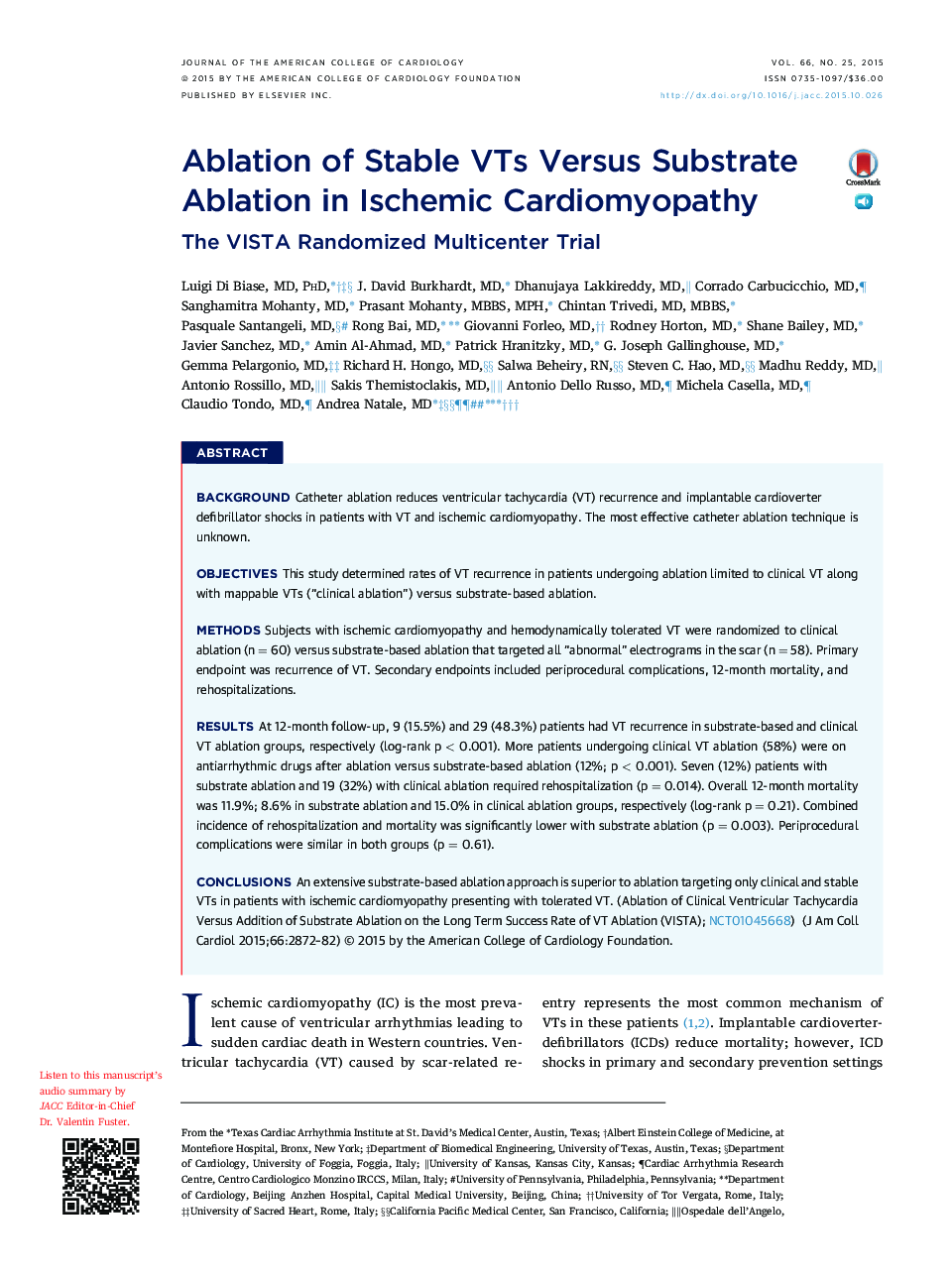| Article ID | Journal | Published Year | Pages | File Type |
|---|---|---|---|---|
| 5982212 | Journal of the American College of Cardiology | 2015 | 11 Pages |
BackgroundCatheter ablation reduces ventricular tachycardia (VT) recurrence and implantable cardioverter defibrillator shocks in patients with VT and ischemic cardiomyopathy. The most effective catheter ablation technique is unknown.ObjectivesThis study determined rates of VT recurrence in patients undergoing ablation limited to clinical VT along with mappable VTs (“clinical ablation”) versus substrate-based ablation.MethodsSubjects with ischemic cardiomyopathy and hemodynamically tolerated VT were randomized to clinical ablation (n = 60) versus substrate-based ablation that targeted all “abnormal” electrograms in the scar (n = 58). Primary endpoint was recurrence of VT. Secondary endpoints included periprocedural complications, 12-month mortality, and rehospitalizations.ResultsAt 12-month follow-up, 9 (15.5%) and 29 (48.3%) patients had VT recurrence in substrate-based and clinical VT ablation groups, respectively (log-rank p < 0.001). More patients undergoing clinical VT ablation (58%) were on antiarrhythmic drugs after ablation versus substrate-based ablation (12%; p < 0.001). Seven (12%) patients with substrate ablation and 19 (32%) with clinical ablation required rehospitalization (p = 0.014). Overall 12-month mortality was 11.9%; 8.6% in substrate ablation and 15.0% in clinical ablation groups, respectively (log-rank p = 0.21). Combined incidence of rehospitalization and mortality was significantly lower with substrate ablation (p = 0.003). Periprocedural complications were similar in both groups (p = 0.61).ConclusionsAn extensive substrate-based ablation approach is superior to ablation targeting only clinical and stable VTs in patients with ischemic cardiomyopathy presenting with tolerated VT. (Ablation of Clinical Ventricular Tachycardia Versus Addition of Substrate Ablation on the Long Term Success Rate of VT Ablation (VISTA); NCT01045668)
